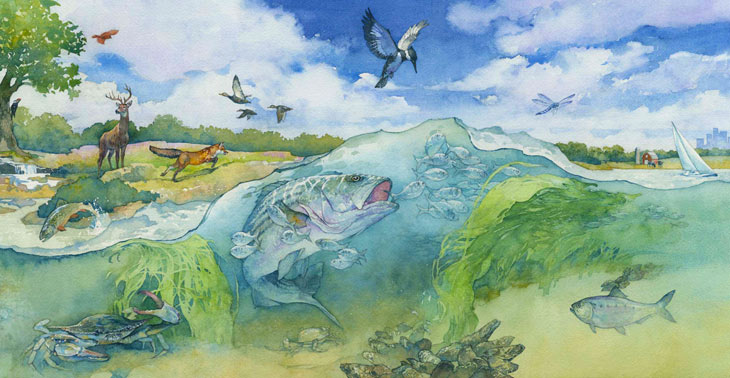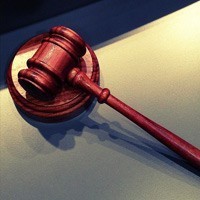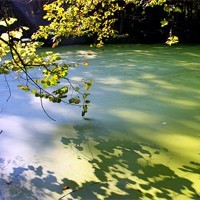Discover the Chesapeake
The Chesapeake Bay - the largest estuary in the United States - is an incredibly complex ecosystem that includes important habitats and food webs. The Bay and its rivers, wetlands and forests provide homes, food and protection for diverse groups of animals and plants. Fish of all types and sizes either live in the Bay and its tributaries year-round or visit its waters as they migrate along the East Coast.
Bay 101
Select a category below to view videos from our Bay Program video library. Prior to using any of these videos, please view our terms of use to learn about usage rights.

Learn about efforts to curb the invasive insect that is decimating ash trees
The Chesapeake Bay Watershed
A watershed is an area of land that drains to a particular river, lake, bay or other body of water. Watersheds are sometimes called “basins” or "drainage basins."
We all live in a watershed. Some watersheds, like that of your local stream or creek, are small. Others, like the Chesapeake Bay watershed, are very large. Learn more about the Chesapeake Bay watershed.
The Bay Ecosystem
An ecosystem is a complex set of relationships among living and non-living things. Air, water, soil, sunlight, plants and animals – including humans – make up an ecosystem. Ecosystems can be as tiny as a patch of dirt in your backyard, or as large as the entire Chesapeake Bay watershed.

The Chesapeake Bay, the largest estuary in the United States, is an extremely productive and complex ecosystem. The Bay ecosystem consists of the Bay itself, its local rivers and streams, and all the plants and animals it supports. Learn more about the Chesapeake Bay ecosystem.
Critter Of The Month
Lumpfish
Cyclopterus lumpus
The lumpfish lives in the North Atlantic and occasionally visits the Chesapeake Bay. The first fin on its back is covered in skin, giving it its characteristic high crest.
Chesapeake History
2014

-
The Chesapeake Executive Council signs the Chesapeake Bay Watershed Agreement, which contains goals and outcomes that will guide conservation and restoration across the watershed. For the first time, the Bay’s headwater states commit to those goals that reach beyond water quality.
2013

-
A federal judge rules that the U.S. Environmental Protection Agency can set pollution limits for the Chesapeake Bay, thus upholding the Total Maximum Daily Load (TMDL) that was challenged in court in 2011.
2012

-
Harris Creek becomes the first target of the oyster restoration goals set forth in the Chesapeake Bay Executive Order: to restore oyster populations in 20 Bay tributaries by 2025. In this Choptank River tributary, existing reefs will be studied, new bars will be built and spat-on-shell will be planted.
2011

-
The U.S. Environmental Protection Agency issues a new Municipal Separate Storm Sewer Permit to the District of Columbia. It is the first of its kind to incorporate green infrastructure into its requirements, setting a national model for stormwater management.
2010

-
Maryland, Virginia and New York ban phosphates in dishwasher detergent to lower phosphorous pollution in local waterways.
-
The U.S. Environmental Protection Agency establishes the Total Maximum Daily Load to limit the amount of pollutants that can enter the Chesapeake Bay.
-
The Bay Program launches ChesapeakeStat to improve communication about restoration goals, progress and funding.









